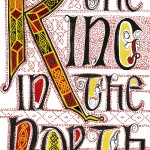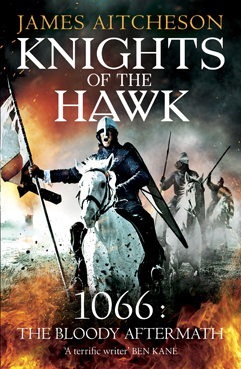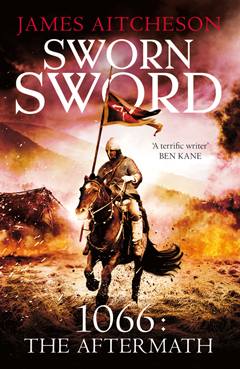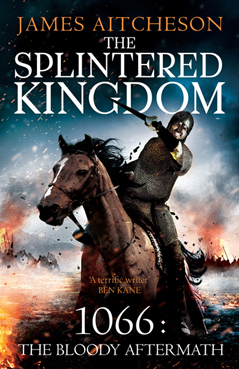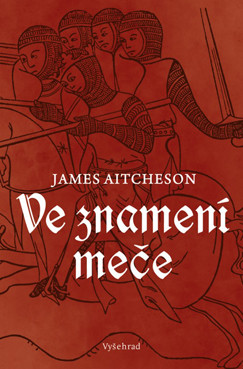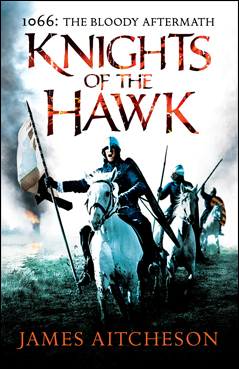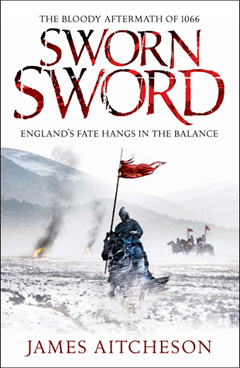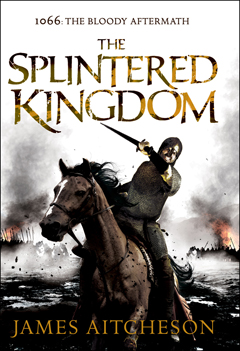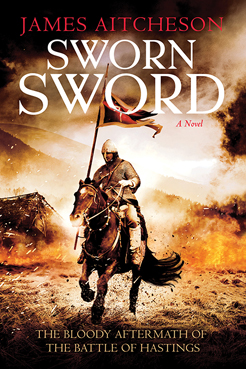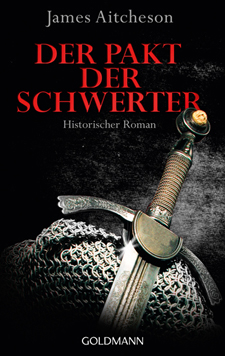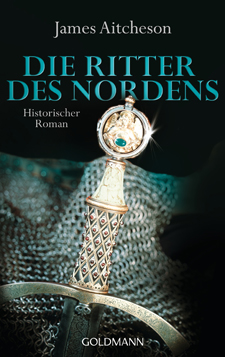A prince-in-exile makes his triumphant return from obscurity, slaying the tyrant who was ravaging his homeland and reclaiming the throne that, half a lifetime earlier, was stolen from him, before establishing himself as one of the pre-eminent kings of his age and ushering in a golden age for his people. The story of King Oswald of Northumbria (reigned 634-42) is a remarkable one – indeed the stuff of legend – and yet nowadays his achievements have largely been forgotten by most except Anglo-Saxon specialists.
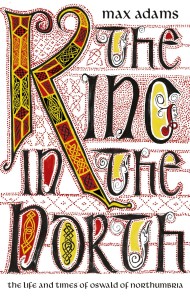
The King in the North
Max Adams • 448 pp. • Head of Zeus
Hardback • £25.00
In keeping with the book’s subtitle, “the life and times of Oswald of Northumbria”, Adams does not examine his subject’s career in isolation, but also explores the array of societies and cultures – religious and secular – that inhabited seventh-century Britain, and so places his reign in its historical context. While Oswald, his achievements and his afterlife as the focus of a saintly cult form the backbone of the book, a significant amount of attention is given also to the career of his predecessor Edwin (616-32) as well as to the long reign of his successor, his brother Oswiu (642-70). Indeed The King in the North is less a biography of a single man than it is a study of a dynasty, and of the leading role played by Northumbria in the politics, religion and culture of seventh-century Britain. This was a land divided: a land of seemingly perpetual conflict between rival families, Anglo-Saxons and Britons, new and old customs, pagans and Christians, and even between different branches of the Church: the Irish, the British and the Roman traditions.
Oswald’s reign as king was relatively short – only eight years – and yet his impact in that time was decisive in forging the Northumbrian kingdom. After ousting a Welsh army from his ancestral homelands in order to claim his crown, he proceeded first to unite the ancient provinces of Bernicia and Deira under one rule and, later, to win a great victory over a coalition of forces drawn from the southern Anglo-Saxon kingdoms, which in the following century led the historian Bede to assert that he had “brought under his dominion all the nations and provinces of Britain.”
Exactly how much can and should be read into these words isn’t clear. It would perhaps have been useful to have seen a deeper interrogation of Bede’s statement, which Adams accepts at more or less face value. There’s no doubt that both Oswald and Oswiu were among the most powerful rulers of their age, and widely respected throughout these isles. What’s more questionable is the extent to which they can be justifiably said to have been overlords over all the kingdoms of Britain, south as well as north of the Humber. What might this overlordship have entailed? How might it have been achieved and exercised in practice? What was the exact extent of their authority, and was it was uniform throughout the territories that lay beyond their kingdom’s borders? Given that their power base was centred upon Bamburgh, it is hard to imagine how they could have exercised much influence over Wessex or Kent, for example.
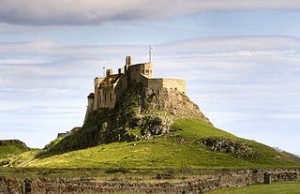
Lindisfarne Castle on Holy Island. The castle was built in 1550, re-using stone from the Norman priory. (Photo credit: Matthew Hunt. Reproduced under the Creative Commons Attribution 2.0 Generic licence.)
Around these events Adams expertly weaves his account. If the title of The King in the North is intended as a nod towards George R. R. Martin’s A Song of Ice and Fire series, then the comparison between the world of Oswald and that of Eddard Stark is an apt one. The political landscape of seventh-century Britain was a ruthless and volatile one, in which rival dynasties pursued vicious bloodfeuds and in which fortunes of entire kingdoms could be overtuned at a single sword’s blow. Elaborately constructed networks of alliances and tribute rarely outlived the rulers at their head. Power rested in the hands of the most military successful: those who were able to attract the largest warbands, and who were able to prove their throne-worthiness through victory in battle.
The great triumph of Adams’ study is in bringing all this to life. Impeccably researched, compellingly written and accessible to the general reader as well as to the specialist scholar, The King in the North vividly reconstructs the world that Oswald not only inhabited but also helped to shape.
This week I returned to the place where Tancred’s story begins – to Durham, where the city’s annual Book Festival has been taking place this month. An enthusiastic audience joined myself and my event host, Dr Giles Gasper, lecturer in medieval history at Durham University, for a discussion about Sworn Sword and its connection with the city.
One of the questions I was asked was why I chose Durham in particular as the place to begin the novel. In fact the battle that forms the opening chapters was a real-life event that took place on or around 28 January 1069, and it’s spoiling none of the plot to say that it marked a significant turning-point in the story of the Conquest. Indeed this was the biggest defeat that the Normans had suffered since arriving on these shores more than two years previously.
Around Christmas 1068, William the Conqueror appointed Robert de Commines, Tancred’s lord, as Earl of Northumbria, the only part of England that had thus far refused to acknowledge him as king. Together with his army – the sources disagree on exactly how many men – Robert marched to subdue the recalcitrant northerners and take the province by force. Soon after arriving in Durham, however, the earl and his forces were routed in a surprise attack under the cover of darkness. The Normans were cut down in the streets and Robert himself was killed. There were few survivors.

View of the tower and north transept of Durham Cathedral.
Walking around the city on my visit there this week, I was reminded just how dramatic a location Durham is, and how its very geography makes it a fascinating setting for a battle. The castle and the cathedral that nowadays dominate the skyline had not yet been built by 1069, but the peninsula on which they are built would have made this a naturally defensible site, protected on three sides by water and by steep inclines that would make any direct assault difficult except from the north. While there is little explicit evidence for any fortification on the site before then, to my mind it seems likely that a stronghold or fastness of some kind must have existed, as I have suggested in Sworn Sword.
Whether or not such defences existed at the time, the very fact that the Northumbrians were able to defeat the Normans here was by all accounts an impressive achievement, and a famous victory. Conversely, to the Normans this would have been seen as a major setback to their conquest of the north. The loss of so many men in one night would not only have dented their confidence but in addition must have placed a very real strain on their defences, especially once the enemy began their southwards march not long after.
The Durham connection was just the starting-point of a great discussion about the Norman Conquest and historical fiction. Topics ranged from the use of Old English place-names in the novel to getting inside the medieval mind, the importance of research and site visits, and my plans for future novels in the series. I certainly enjoyed myself and I hope that my audience did too.
Many thanks to all those involved in the organisation and smooth running of this year’s Festival. Particular thanks also go to my host for the event, Dr Gasper, who generously gave his time after the talk to give me an exclusive tour of Durham Castle’s Norman chapel, which is normally off-limits to the public. One of the earliest stone chapels of its kind known to have been built in England, it is thought to date from the 1080s when it was attached to the house of the Bishop of Durham, who probably used it as a private place of worship. It was a privilege to be allowed access to such impressive architecture, and an unexpected bonus on my northern travels.
I’m hoping to be back in Durham at some point in the New Year, and in February I’ll also be visiting York, the centrepoint for much of the action in Sworn Sword, where I’ll be giving a talk at the Jorvik Viking Festival – more details to follow in due course. Keep checking my Events page for further information about all my upcoming appearances.
*
The Durham Book Festival runs until tomorrow, Sunday 23 October, with further events for young writers continuing through half-term week to Friday 28 October. For more information visit the Festival website.

